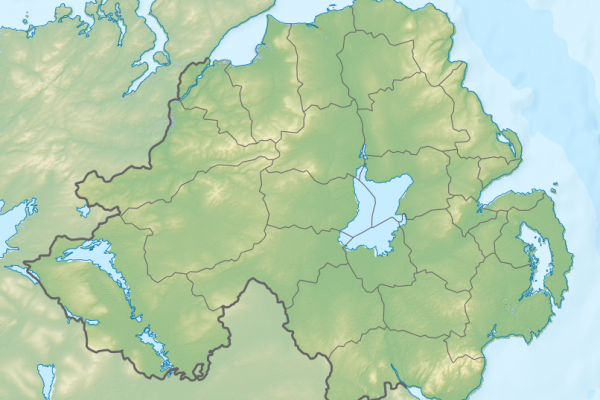The challenges presented by an international border on the island of Ireland has been highlighted as a key challenge in Brexit negotiations but, says Prof Janice Morphett, a solution may already exist in the shape of European Groupings for Territorial Cooperation (EGTCs).
The importance of a Brexit settlement that supports the continuation of Northern Ireland’s Peace process has been underlined in every EU published negotiation position – from the Council, the Commission and the Parliament and once again in the so-called ‘Non paper on key elements likely to feature in the draft negotiating directives’ that appeared on 20th April. In this, the border is listed as the fourth issue to be included in the negotiations immediately after achieving an orderly withdrawal and avoiding a legal vacuum. The ‘non paper’ stresses the need to avoid a hard border, recognise the common travel area and deals with Ireland’s unique geographic situation including the transit of goods. One effect of trying to agree a way forward for this UK/EU border will be a separation between the border of the United Kingdom and Great Britain which will also have wider implications to consider in the future.
However, while this provides some assurances of the importance of the issues facing the implementation of any Brexit agreements for the island of Ireland, it leaves many uncertainties for the 30,000 people who cross the border each day to work and the many integrated business and public services that have grown up across the border since the Good Friday Agreement in 1998. There are already signs that some businesses are relocating across the border to ensure that they can have access to EU legislation, market agreements and, particularly for agri-food business, access to beneficial WTO subsidies that will be lost following Brexit. In public services, the provision of specialist health care facilities that now operate across the border is regarded as very uncertain by some who rely on these for themselves and their families.
While these negotiations and uncertainties continue, there is one approach that could give some certainty to the relationships across the border on the island of Ireland that could be implemented now and could bridge Brexit into whatever follows. This is using an EU Regulation that supports the creation of agreements of European Groupings for Territorial Cooperation (EGTC). Originally established in 2006 , the Regulation supporting these agreements was simplified in 2013 as part of the wider territorial packages for cohesion and Trans European Networks. So what are EGTCs and how might they offer any help in the island of Ireland both now and in the future?
The EGTC allows public bodies in different member states to come together under a new entity with a full legal personality and is designed to ‘facilitate and promote territorial cooperation (cross-border, transnational and interregional). This can include the provision of investment, public services and other cross border agreements and running public transport services, hospitals, managing development projects, exchanging good practices. The EGTC can be established by two or more member states. The Regulation also allows the inclusion of third party states that are not part of the EU. The EGTC can include public bodies and local and regional authorities and it must have an assembly comprising of representatives of the area and a director. The EGTC’s activities are defined through its establishment and it must set a budget and a work programme. EGTCs can be in receipt of EU funding but may also include other funding streams in their programmes.
While there are no EGTCs in the UK or Ireland, in 2016 there were 63 different groupings registered across the EU. These including EGTCs across the borders between France and Belgium in Flanders, across the border between Spain and Portugal in Douro and between Spain and France in the Pyrenees. They are also used for external EU borders such as the grouping for Hungary and the Ukraine. If the Flanders grouping is considered in more detail, it includes a variety of activities in its programme including transport, healthcare, cross border employment and economic development, social inclusion, waste and energy – all of which would be of relevance across the order in Ireland. It also includes ICT, education, research, culture, sport and postal services. In addition to considering cross border services this EGTC has also established some thematic approaches to cross border issues including the consideration of water courses, rural areas, urban areas and maritime cooperation. In terms of tools it is using spatial planning, infrastructure and housing programmes, identifying where there are blockages to working and using legal means to attempt to overcome them if this is appropriate.
Could an EGTC be used now on the Island of Ireland? There seems no reason, subject to agreement of both governments, why such an EGTC could not be progressed alongside Brexit and it could be concluded more quickly. Such an agreement could provide some certainly and stability to cross border communities and those who work in them. It will not solve all the issues raised by Brexit but it would help to identify those cannot be addressed though this means. Such an approach would demonstrate a recognition of the practical solutions that are needed across the border both now and in the future.

